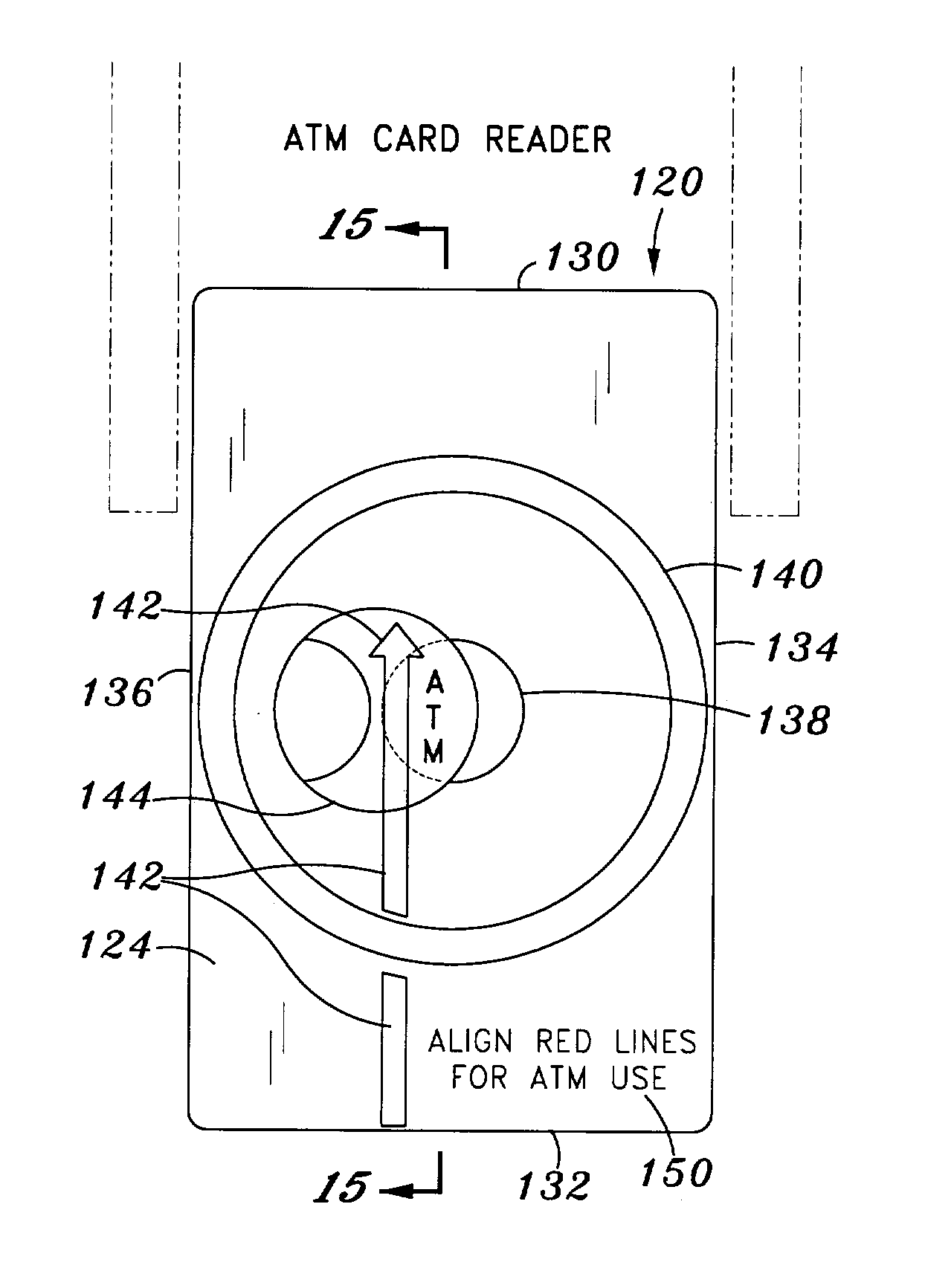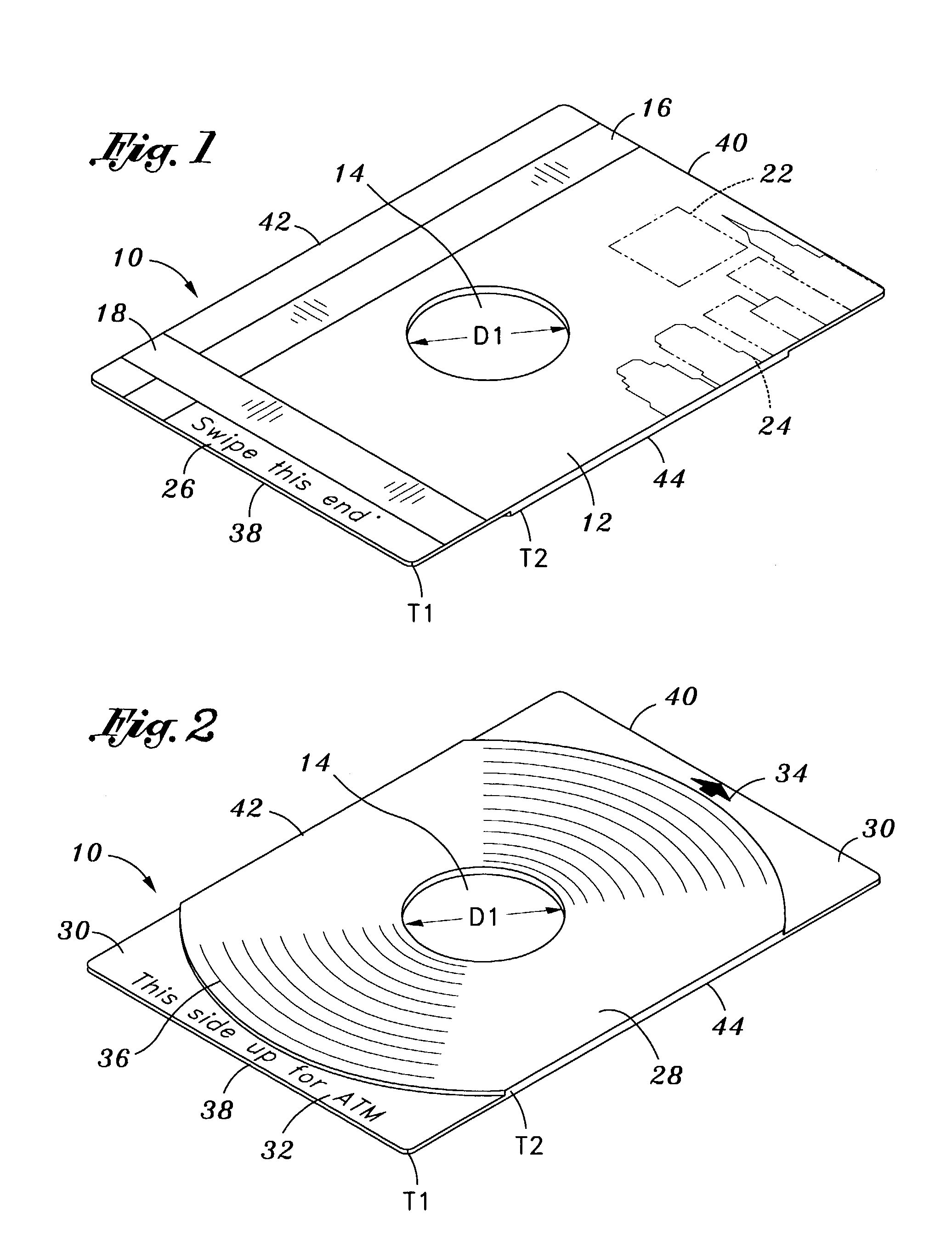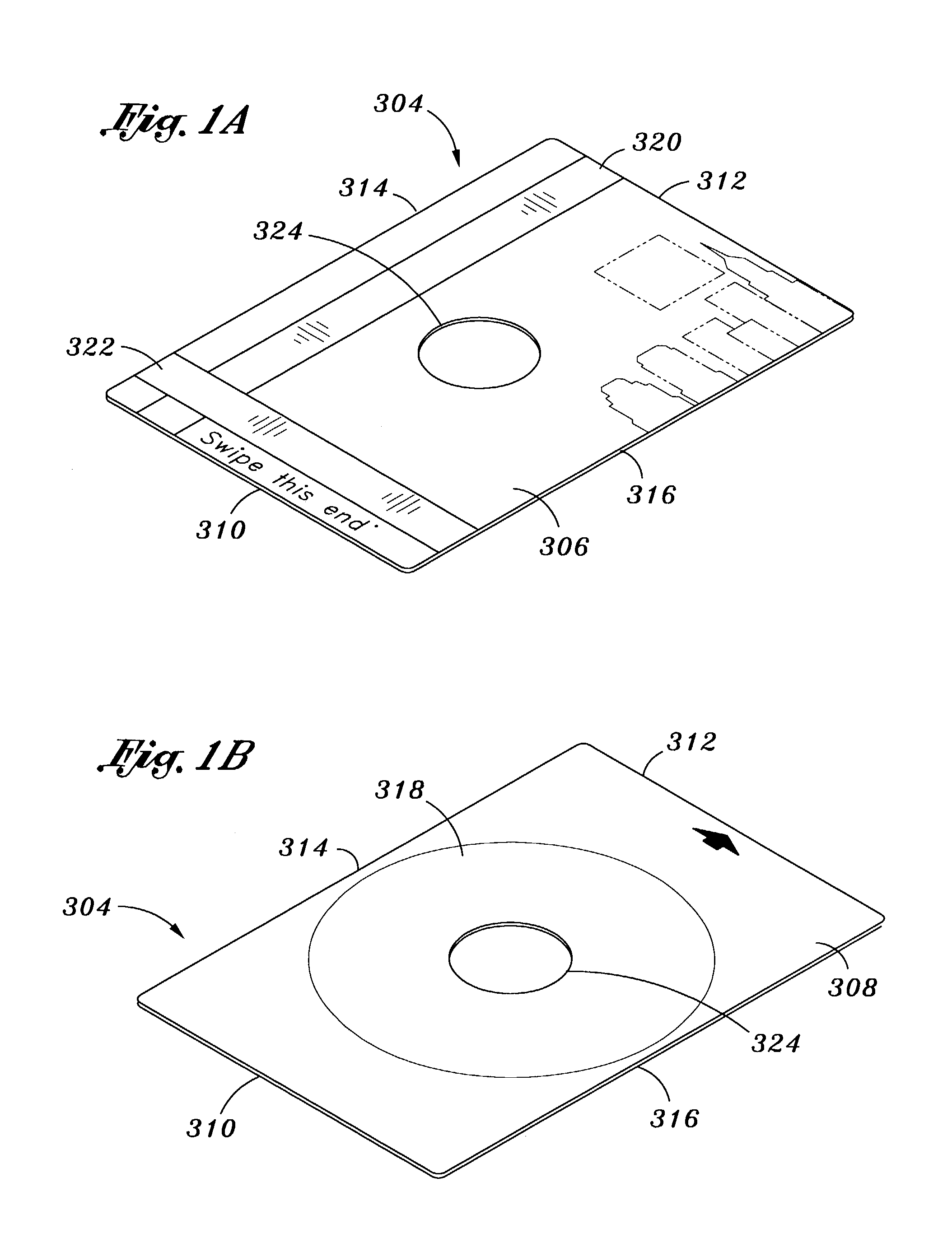Data storage card having both linear and annular data regions
a data storage card and linear technology, applied in the field of card-type devices, can solve the problems of credit cards in their current state, impede their ability to be used for more sophisticated purposes, and insufficient magnetic stripe alone to store large amounts of data, so as to reduce the chance of the card getting stuck therein
- Summary
- Abstract
- Description
- Claims
- Application Information
AI Technical Summary
Benefits of technology
Problems solved by technology
Method used
Image
Examples
second embodiment
[0083]Referring now to FIGS. 4 and 5, an annular optical data region 28 is preferably disposed on the second planar surface 30. A cross-sectional profile of the card body 10 taken along one of the first and second lateral edges 42 and 44 depicts the truncated conical raised portion of the card body 10. Contemporary optical drive carriages are constructed with a circular recessed groove made to fit 3 inch optical discs (not shown). Thus, a portion of the second planar surface 30 should be constructed with at least one physical step which allows the card body 10 to fit snugly into the recessed groove of an optical drive's carriage. In the second embodiment, the entire optical annular data region 28 is raised to complement the optical drive carriage's recessed groove. Precise alignment of the disc with the recessed grooves ensures that the optical drive properly mounts to the disc to read the optical track 36.
[0084]Referring now to FIGS. 2 and 5, the annular optical data region 28 disp...
fifth embodiment
[0097]Referring now to FIGS. 16–18, the data storage card made according to the present invention is shown. As shown in FIG. 18, the card body 120 with the aperture sheath 144 in the first position for cooperatively engaging the card body 120 with the rotatable spindle of an optical drive carriage 156 may be inserted into the grooves 158 of the optical drive carriage 156. The aperture sheath 144 may be movable between a first position raised above one of the first and second planar surfaces 122 and 124 and a second position substantially coplanar with one of the first and second planar surfaces 122 and 124. As shown in FIG. 17, when the aperture sheath 144 is in the first position, the aperture sheath may be raised above the first planar surface 122. In this respect, raising the aperture sheath 144 prevents the card body 120 from being mistakenly inserted into an ATM machine. By lowering the aperture sheath 144 into the second position substantially coplanar with the first planar su...
ninth embodiment
[0107]Turning now to FIGS. 24A and 24B, the covering member 400 is shown incorporated into the data storage card. In the embodiment shown, the covering member 400 is positioned such that the seal 404 is connected to the first planar surface 306 of the data storage card. In one embodiment, the seal 404 is connected to the first planar surface 306 by adhesives or other method commonly known in the art. In another embodiment, especially that in which GE HCR or GE LIM makes up the seal 404, the seal 404 itself has adhesive properties to thereby attach the seal 404 to first planar surface 306.
[0108]As such, when the covering member 400 is in its free state (FIG. 24A), the plug 402 resides within the optical carriage engaging aperture 324. In other words, the covering member 400 extends over and within the aperture 324. Thus, the aperture 324 is less likely to cause the data storage card to become jammed within a data reader. More specifically, as the data storage card is fed into a data ...
PUM
 Login to View More
Login to View More Abstract
Description
Claims
Application Information
 Login to View More
Login to View More - R&D
- Intellectual Property
- Life Sciences
- Materials
- Tech Scout
- Unparalleled Data Quality
- Higher Quality Content
- 60% Fewer Hallucinations
Browse by: Latest US Patents, China's latest patents, Technical Efficacy Thesaurus, Application Domain, Technology Topic, Popular Technical Reports.
© 2025 PatSnap. All rights reserved.Legal|Privacy policy|Modern Slavery Act Transparency Statement|Sitemap|About US| Contact US: help@patsnap.com



